Brow bone reduction
Table of contents:
The forehead is one of the more apparent gender markers. Brow bone reduction (also known as forehead recontouring or forehead contouring) is very powerful and can transform a prominent male forehead to fall within the average female ranges. Brow bone reduction is one of the core Facial Feminization Surgery procedures.
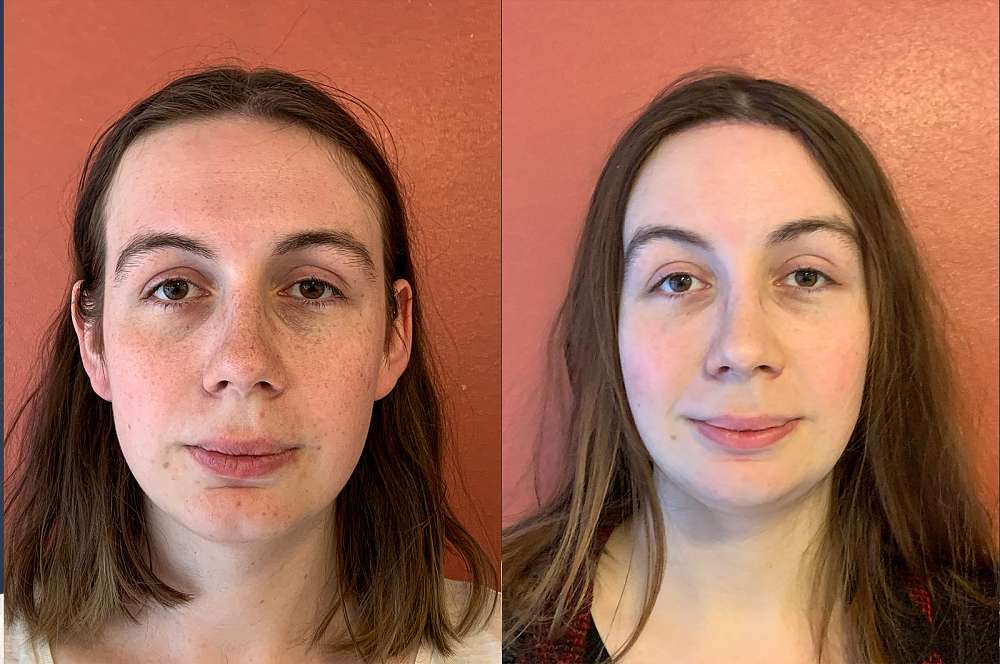



















Difference between the male and female forehead
The 3 most important differences between male and female foreheads are:
1 Brow bossing
The main difference between male and female foreheads is that males often have a ridge of bone around the upper edge of the eye sockets called the “brow ridge” or “brow bossing”. Female foreheads tend to have little or no bossing.
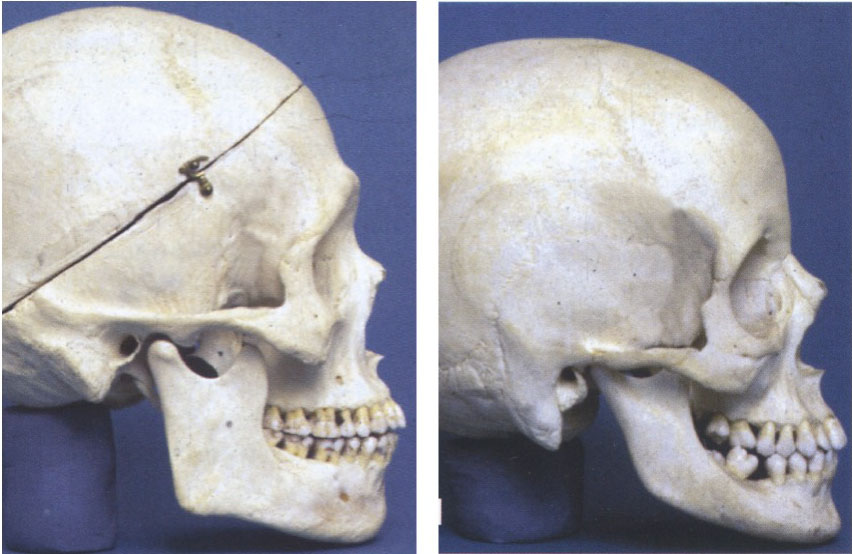 Brow bone of male (left) vs female (right) skull.
Brow bone of male (left) vs female (right) skull.
2 Flat spot
Between the ridges of the two eye sockets, a flat spot can be visible. As women don’t have these ridges, the flat spot between them is not present either.
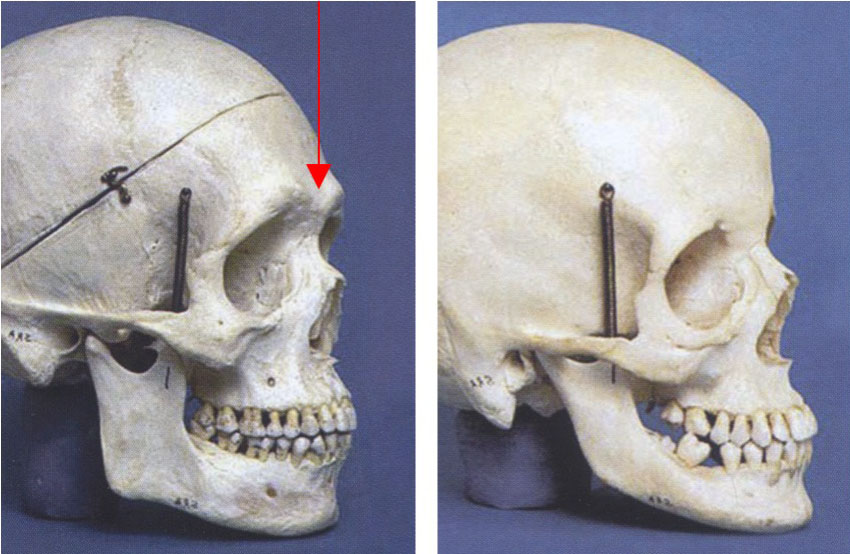 Notice the flat spot on the male forehead (left) compared to the female forehead (right).
Notice the flat spot on the male forehead (left) compared to the female forehead (right).
3 Slope of the forehead
Because of the brow ridge, the general angle of the forehead in males is steeper and the angle between the forehead and nose is sharper in lateral view. Women, because they don’t have the brow ridge, have a more vertical appearance of the forehead in lateral view. The angle between the nose and forehead is more open.
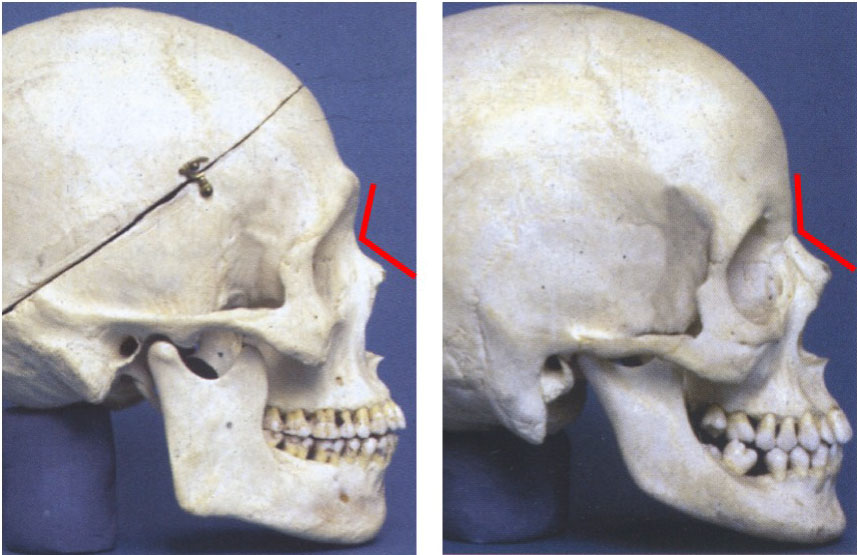 Because of the male frontal bossing the angle between the nose and forehead in men (left) is sharper than this angle in women (right).
Because of the male frontal bossing the angle between the nose and forehead in men (left) is sharper than this angle in women (right).
Feminizing the forehead
Brow bone reduction is a procedure that involves brow shaving and surgically altering the bone.
The outer segments of the bossing that the eyebrows sit on are solid bone and can simply be filed down.
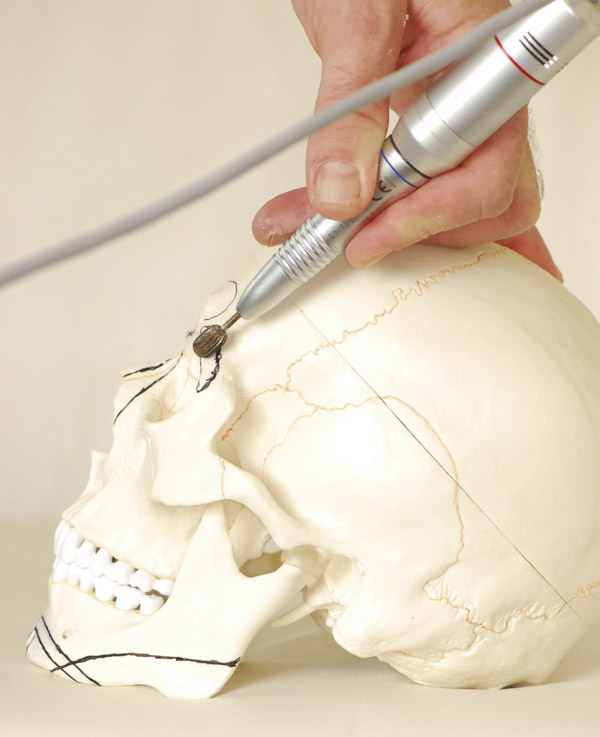 Burring away the lateral brow ridge with a brow bone reduction
Burring away the lateral brow ridge with a brow bone reduction
The section of bossing between the eyebrows sits over an area called the frontal sinus. Because the frontal sinus is hollow, it is more difficult to remove bossing there. It involves removing the plate of bone in front of the frontal sinus, reshaping it, and placing it back into position with small titanium screws to hold the bone in place while it heals.
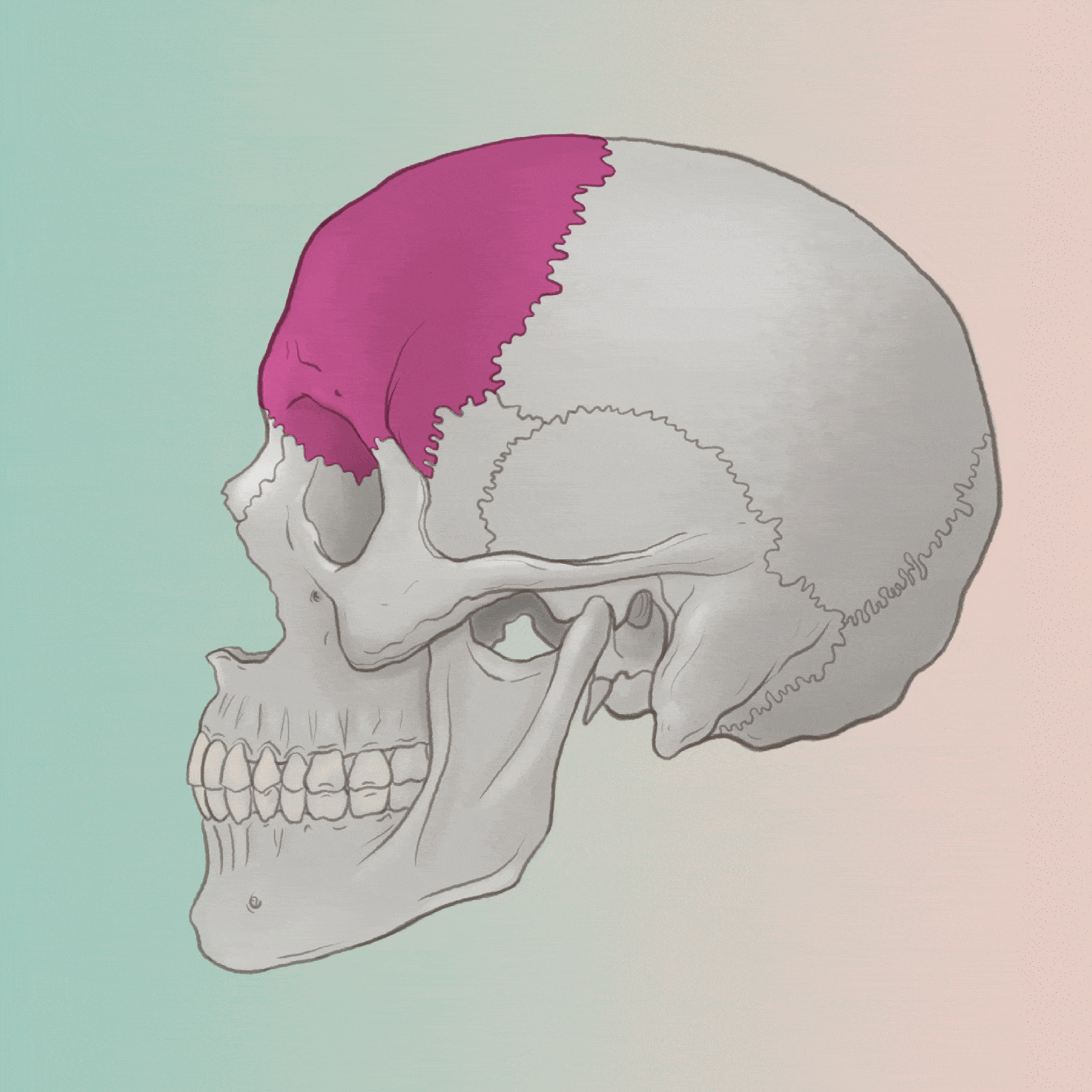 The central part of the brow ridge can often not be shaved down during a brow bone reduction because of the frontal sinus which lays behind it. Simple shaving of the bone over the frontal sinus would create a cavity.
The central part of the brow ridge can often not be shaved down during a brow bone reduction because of the frontal sinus which lays behind it. Simple shaving of the bone over the frontal sinus would create a cavity.
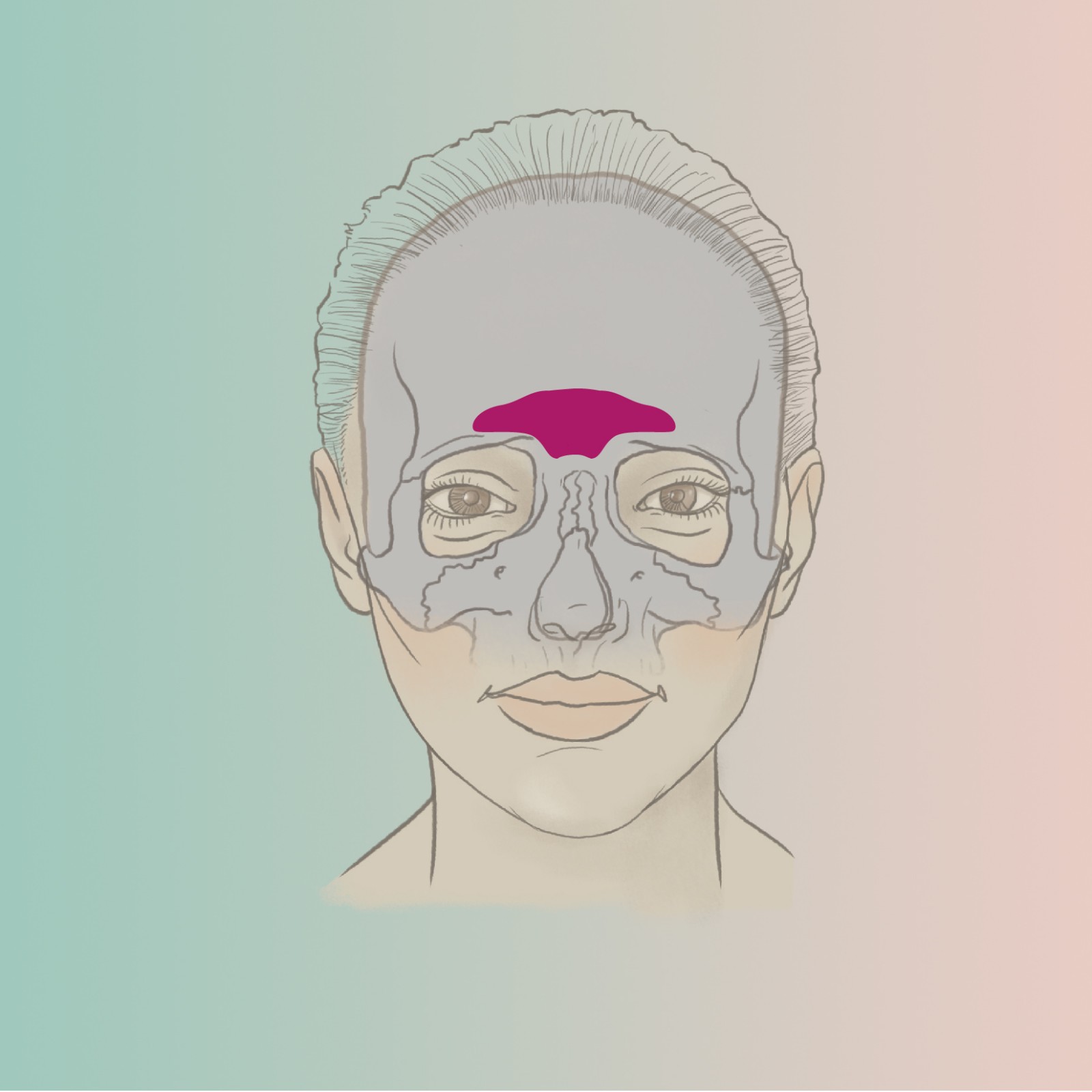 Location of the frontal sinus in frontal view. In this area, brow bone can not simply be shaved.
Location of the frontal sinus in frontal view. In this area, brow bone can not simply be shaved.
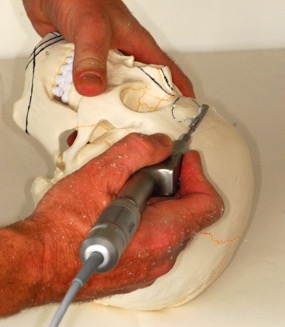 The central part of the brow bone has to be remodeled with a saw because of the frontal sinus beneath.
The central part of the brow bone has to be remodeled with a saw because of the frontal sinus beneath.
Although the brow bone reduction process as described above is the most used, there are 4 types of brow bone reduction to be distinguished. Which one the surgeon uses depends on the prominence of your brow bone, the thickness of your frontal sinus wall and the size of your frontal sinus and forehead in general.
Type 1 brow bone reduction — Shaving
Some patients have a very small sinus with a thick frontal sinus wall. In this case, the excess amount of bone can just be burred away. This is what Dr Ousterhout calls a ‘type 1 forehead’. A lot of surgeons today can do only this: they burr away that small amount of bone and call it “feminization of the forehead”. Only a small percentage of patients will have a good result with this technique: those with only a small bossing or a small sinus (10%).
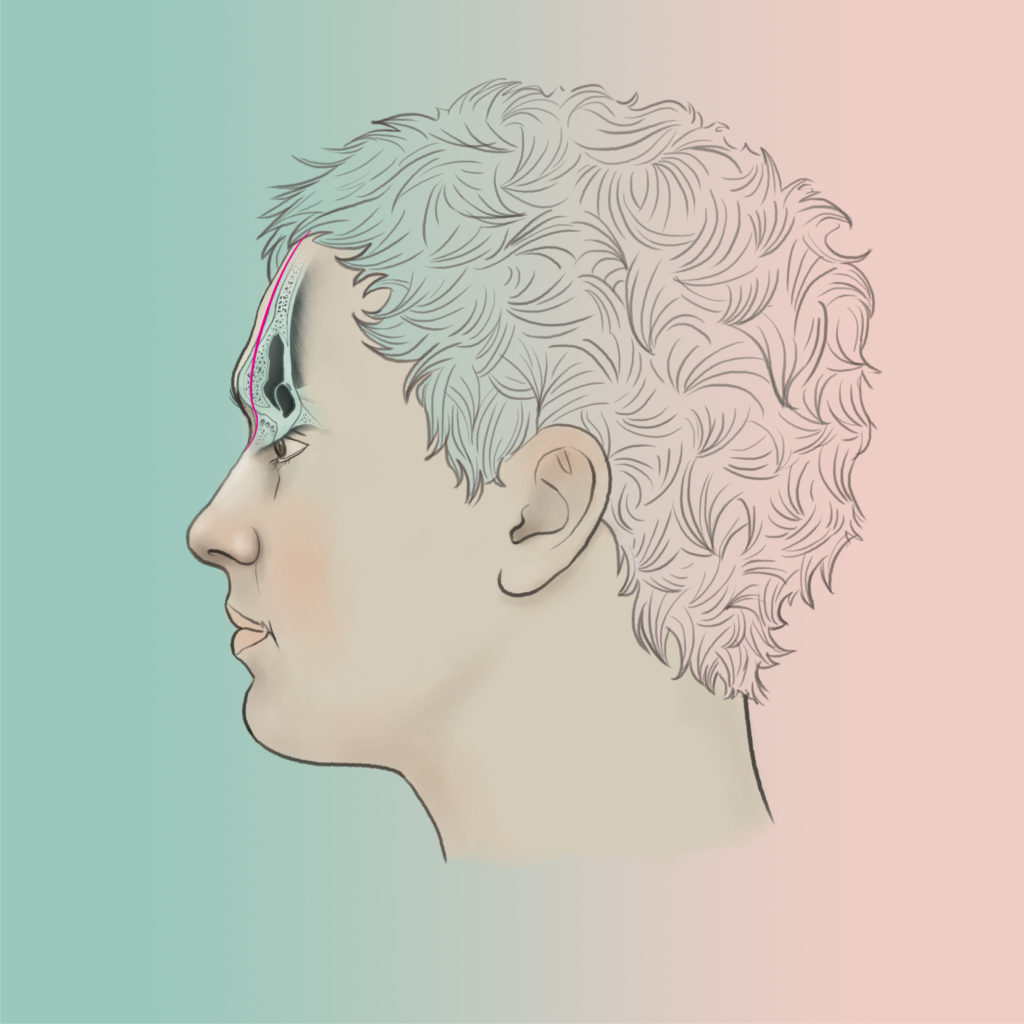 GOOD INDICATION for a type 1: Some patients have a very small sinus with a thick frontal sinus wall. In this case, the excess amount of bone can just be burred away during a brow bone reduction.
GOOD INDICATION for a type 1: Some patients have a very small sinus with a thick frontal sinus wall. In this case, the excess amount of bone can just be burred away during a brow bone reduction.
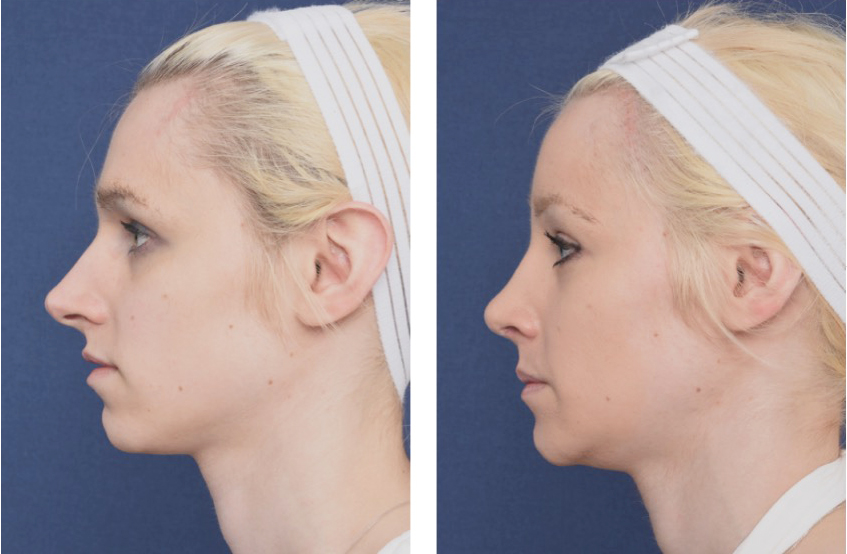 Before and after brow bone reduction type 1 (good indication)
Before and after brow bone reduction type 1 (good indication)
Despite what some surgeons might tell you, it is generally not possible to bring a male forehead into normal female ranges (indicated by the red line) with burring only because of the frontal sinus.
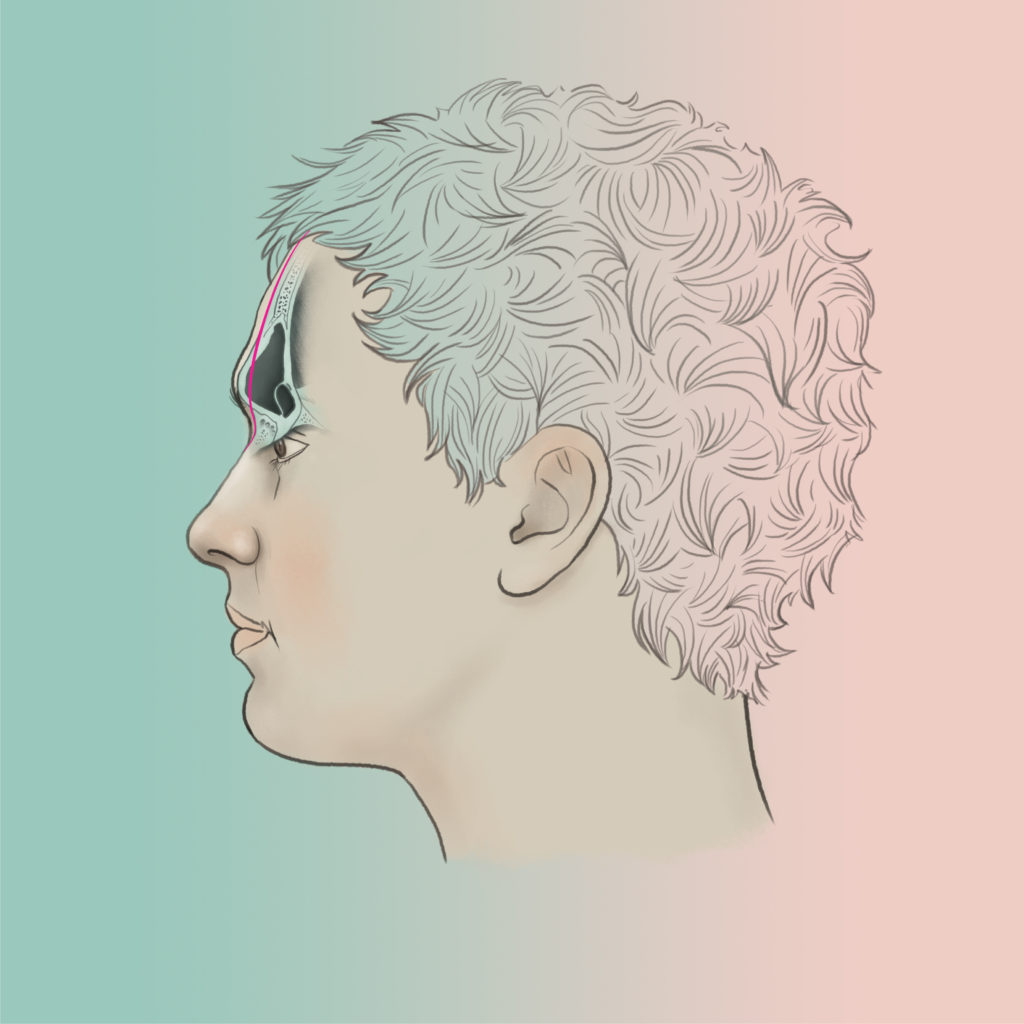 BAD INDICATION for a type 1 brow bone reduction: Despite what some surgeons might tell you, it is mostly not possible to bring a male forehead into normal female ranges (indicated with the red line) by just shaving because of the frontal sinus.
BAD INDICATION for a type 1 brow bone reduction: Despite what some surgeons might tell you, it is mostly not possible to bring a male forehead into normal female ranges (indicated with the red line) by just shaving because of the frontal sinus.
Possible complications
In a type 1 forehead recontouring, bone is milled off and the frontal sinus remains closed. However, it often happens that the bone is so thin at the end of the procedure that after weeks/months, a hole still forms in the frontal sinus front wall. If the bone has too little blood circulation it can disappear.
Usually, the patient will not notice this because it is a small hole. Because the skin around the hole is fused with the bone, no air can come out of the frontal sinus subcutaneously.
However, if the hole is larger, a small dent in the bone may become visible. This dent can be filled with some fat from the tummy or legs (lipofilling). Another solution can be a new forehead recontouring in which the front wall of the frontal sinus is removed and the sinus is filled with bone cement. In this way, the forehead can be given the desired shape.
This is something that happens regularly with all FFS surgeons. It, therefore, says nothing about the quality of the operation or the surgeon. Some patients heal differently than others.
Type 2 brow bone reduction—Shaving and Filling
This option has a limited indication and is overused by surgeons that don’t perform type 3 forehead reconstructions. It can be used properly when the projection angle between the nose and the forehead is already satisfying. Only the concavity behind the bossing has to be addressed in that case. The concave area above the bossing will be filled with bone cement.
If a type 2 brow bone reduction is used when not really indicated, a ‘heavy’ dolphin-like forehead will be created. As you can see, although the new forehead is smooth, it bulges forwards when compared to the “ideal” female forehead line (which is indicated in red on the drawing below).
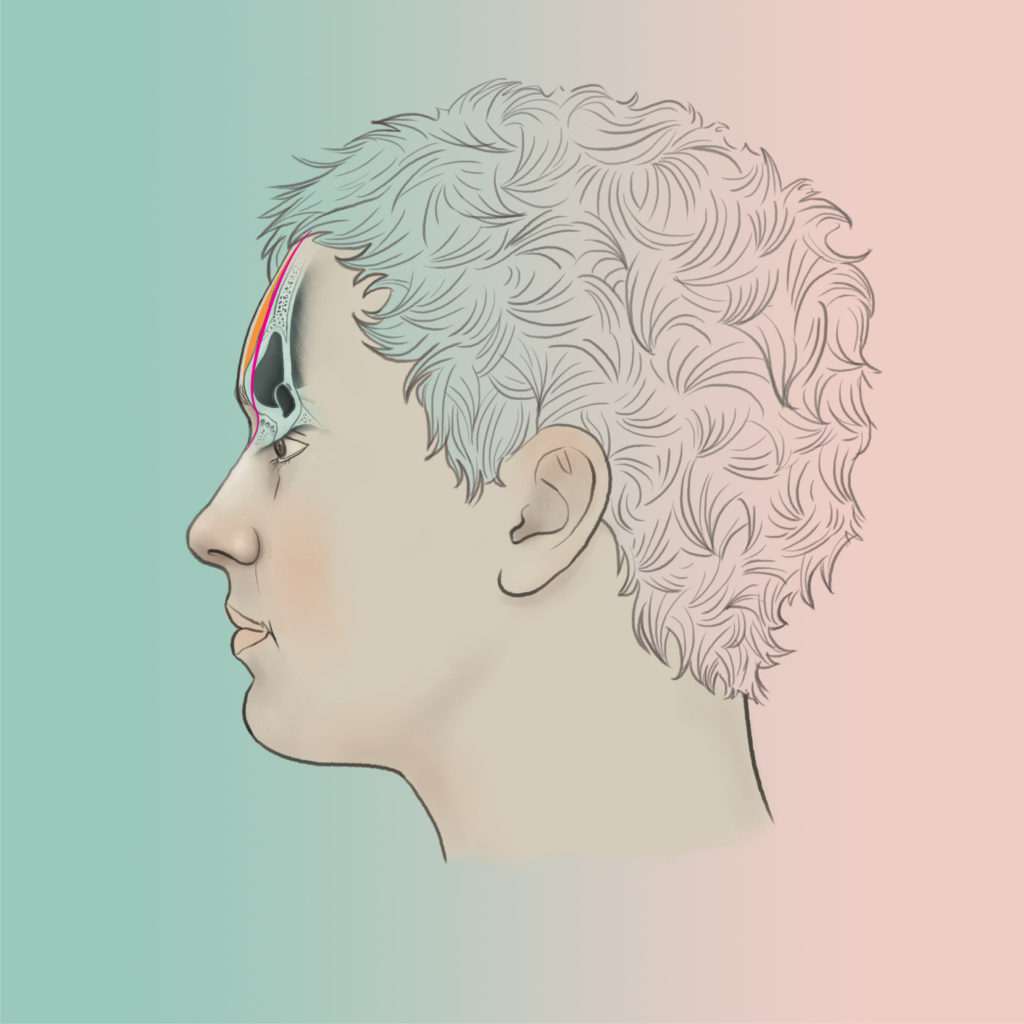 BAD INDICATION for a type 2 brow bone reduction: If a type 2 brow bone reduction is used when not really indicated, a ‘heavy’ dolphin-like forehead will be created. As you can see, although the new forehead is smooth, it bulges forwards of the “ideal” female forehead line (the ideal female line is indicated in red).
BAD INDICATION for a type 2 brow bone reduction: If a type 2 brow bone reduction is used when not really indicated, a ‘heavy’ dolphin-like forehead will be created. As you can see, although the new forehead is smooth, it bulges forwards of the “ideal” female forehead line (the ideal female line is indicated in red).
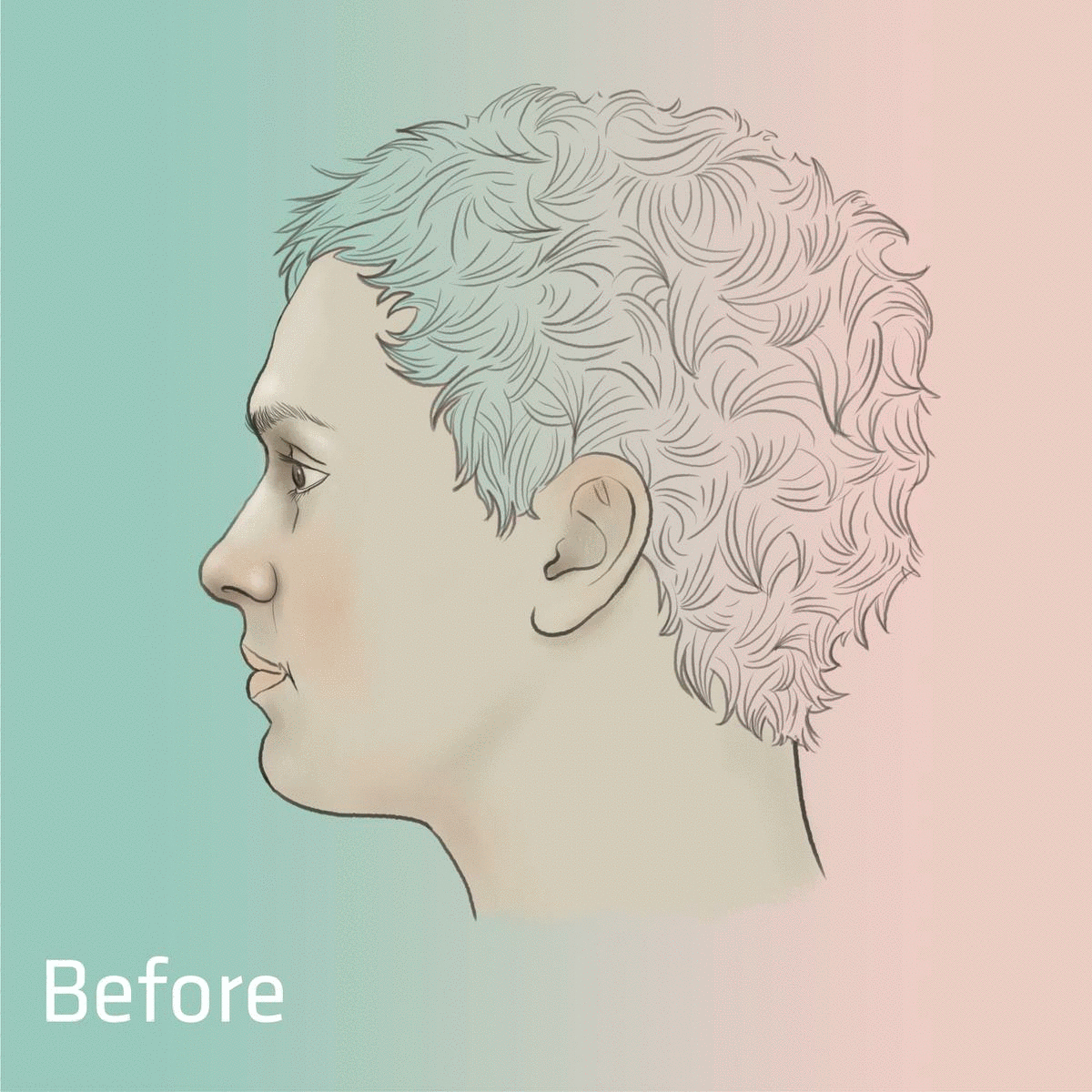 Comparison of the brow bone reduction type 2 and 3 if you have a heavy forehead.
Comparison of the brow bone reduction type 2 and 3 if you have a heavy forehead.
Type 3 brow bone reduction — Forehead reconstruction
The forehead recontouring procedure we perform the most (since it is indicated most) is called the ‘type III’ procedure by Dr Ousterhout. During this procedure, the anterior wall of the frontal sinus bone is removed, remodelled and put back. Sometimes it is necessary to use a combination of forehead reconstruction and some filling with bone cement to get the desired forehead shape. Dr Bart van de Ven uses the bone cement more and more often to get the exact result he wants.
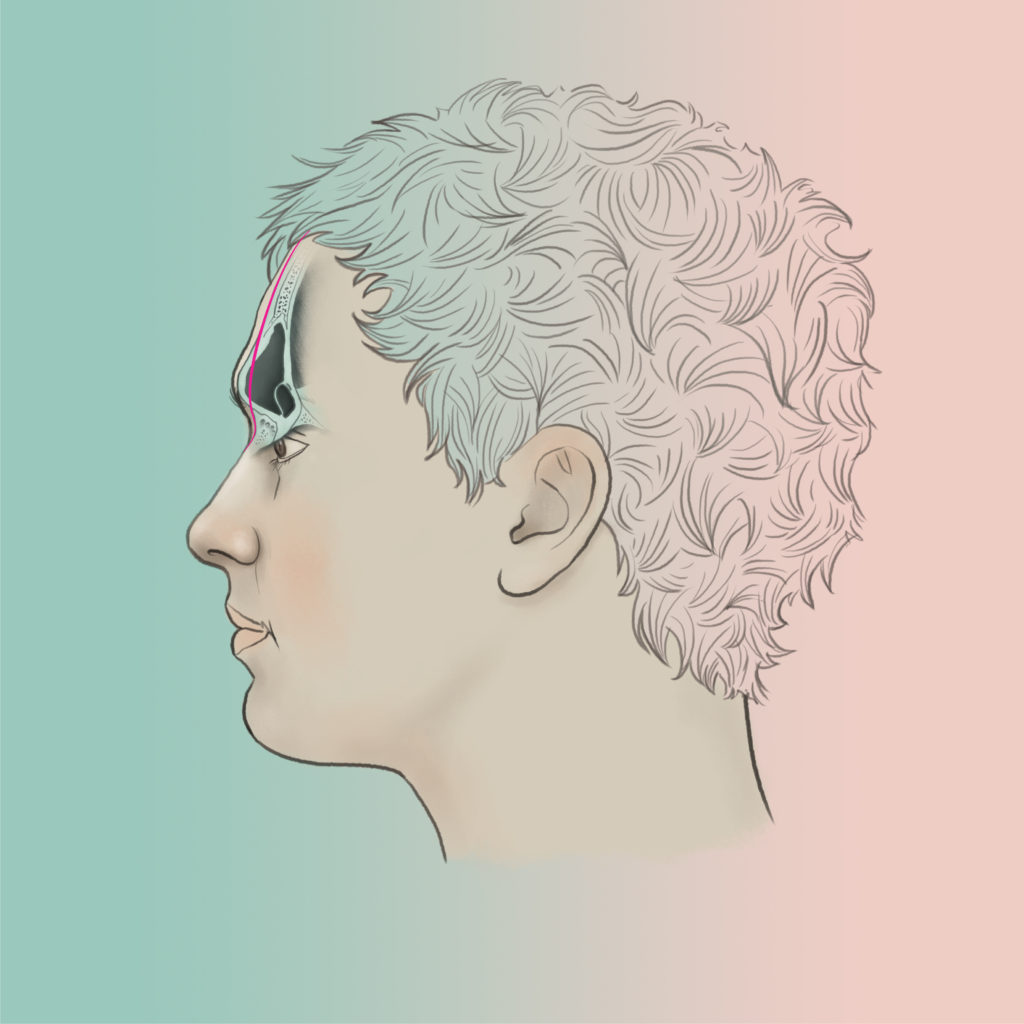 INDICATION for a type 3 brow bone reduction: frontal sinus wall has to be removed, shaved and placed back.
INDICATION for a type 3 brow bone reduction: frontal sinus wall has to be removed, shaved and placed back.
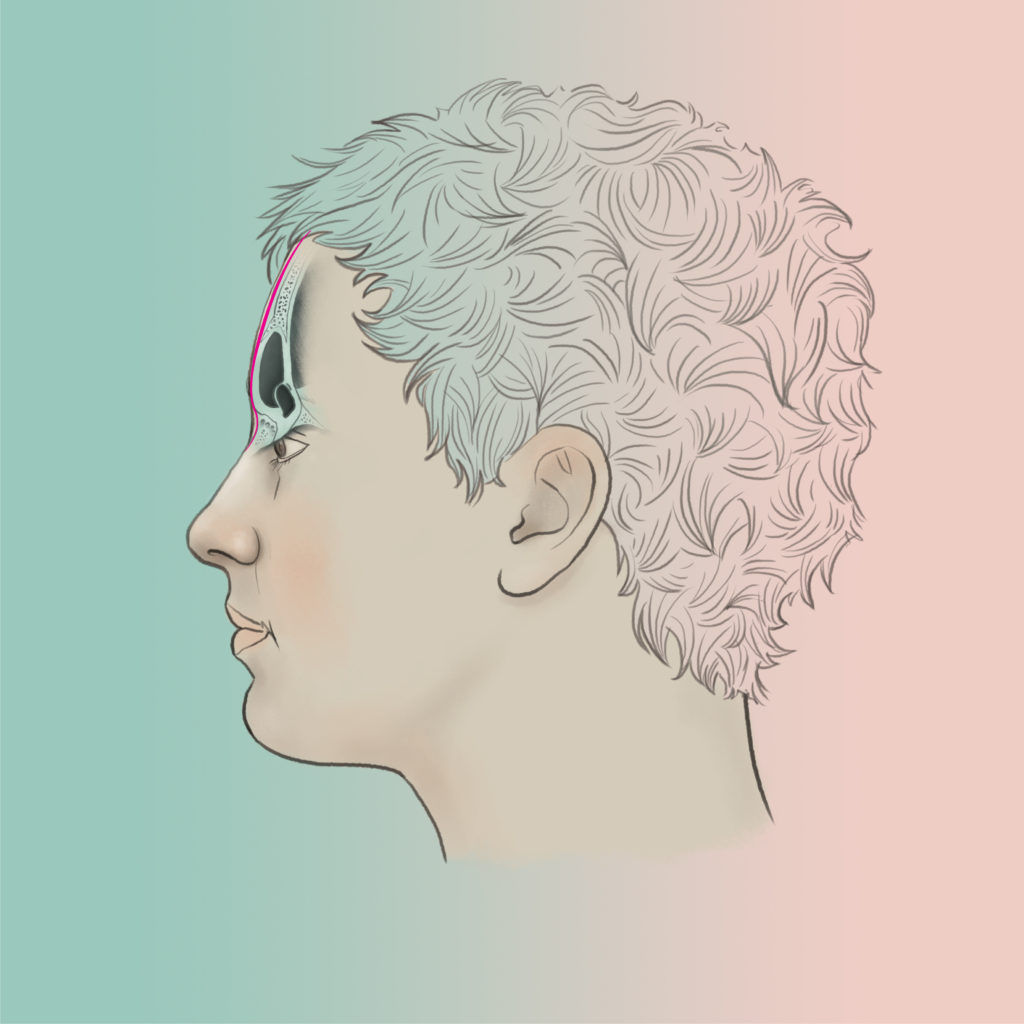 Reconstructed forehead after a brow bone reduction type 3.
Reconstructed forehead after a brow bone reduction type 3.
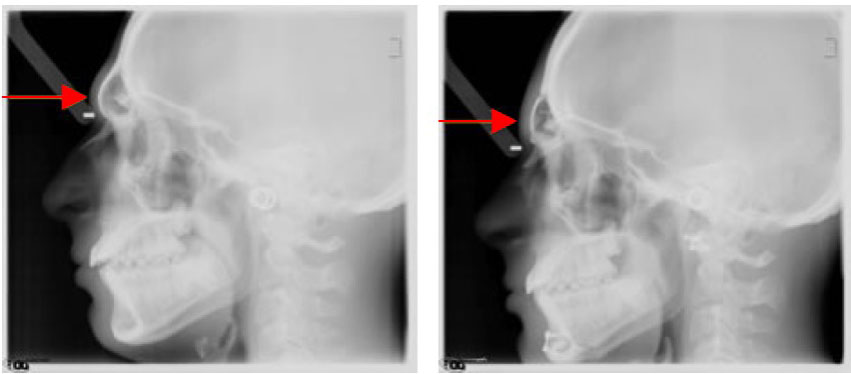 Rx of the forehead before (left) and after (right) brow bone reduction type 3.
Rx of the forehead before (left) and after (right) brow bone reduction type 3.
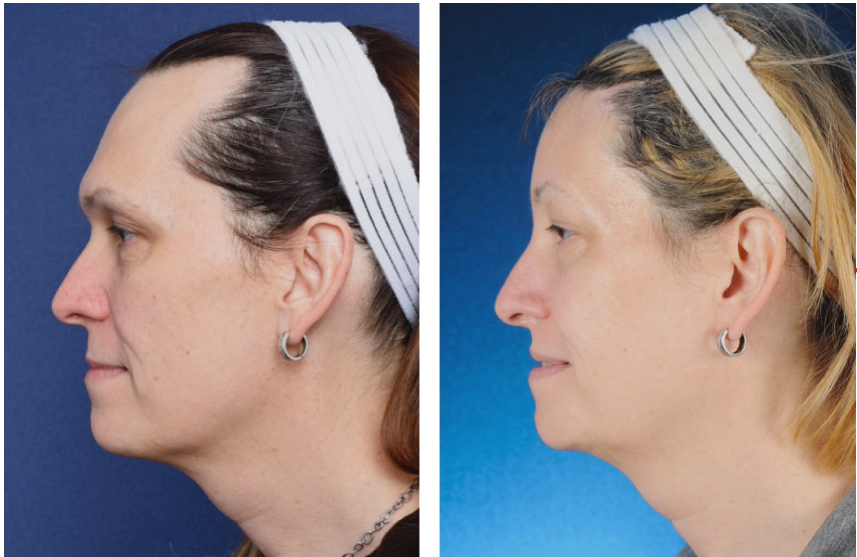 Before and after brow bone reduction type 3
Before and after brow bone reduction type 3
Type 4 brow bone reduction—Forehead reconstruction and Filling
Sometimes it is necessary to use a combination of forehead reconstruction and some filling with bone cement to get the desired forehead slope. Dr Bart van de Ven uses the bone cement more and more often to get the exact result he wants.
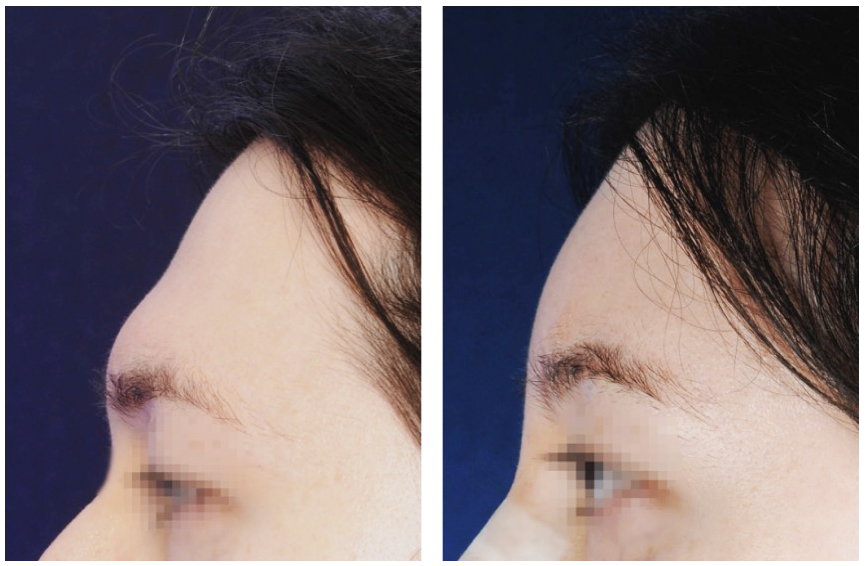 Before and after brow bone reduction type 4
Before and after brow bone reduction type 4
Procedure
- General anesthesia is given.
- An incision is made along the hairline. The incision is made just like it would be made during scalp advancement surgery (forehead reduction).
- The forehead skin is pulled forward to reveal the bone.
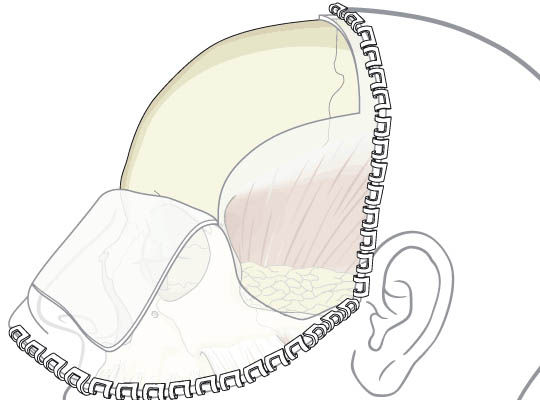
- The solid orbital rims on the outside are shaved.
- During a type 3 brow bone reduction, the central bone plate that covers the frontal sinuses is removed, thinned until the desired thickness is achieved, and reshaped.
- Finally, the refined bone plate is fixed in place with titanium micro screws. The heads of the screws are removed so they cannot be felt or seen through the skin.
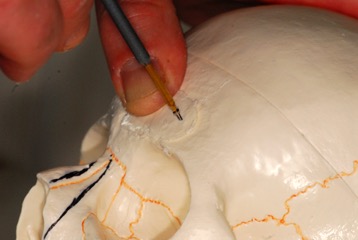 The plate of the frontal sinus is fixated with screws.
The plate of the frontal sinus is fixated with screws.
- As with scalp advancement, the skin is fixed to the bone using Endotines to prevent it from pulling back.
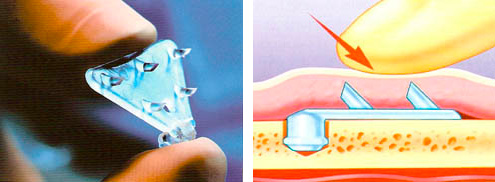
Recovery
- Hospital—You will spend one night at the hospital following surgery.
- Pain—Pain may occur for a few days, and is manageable with normal painkillers.
- Work—Many patients can go back to work within two weeks following this surgery (as a stand-alone procedure).
- Sport—Avoid physical activity that causes sweating or a rise in blood pressure for eight days.
- Sutures—Sutures are self-dissolving. They dissolve in about a week's time.
- Forehead Numbness—Expect your forehead to be numb for about 3 months.
- Blurred Vision (seldom, 5%)—Because of swelling around the eyes, some patients have noticed some degree of blurriness for 1 to 4 months.
Complications
- Changed feeling of the scalp—Because the skin is detached from the bone during the forehead recontouring it is possible the feeling in the scalp changes. In most of the patients, sensation returns to normal within the year, but some patients report the feeling doesn’t return to normal 100%. Most don’t report this as a problem, but rather something they noticed.
- Infection
- Asymmetry
- Non-satisfying aesthetic result
- Double vision in certain directions (temporary frequent, permanently rare)
- Reduced sensation of the forehead skin (temporary always, permanently rare)
- Changes to the shape of the frontal sinus could change the resonance (amplification of vocal sounds). (Semi-)professional singers should be aware of this risk and weigh the pros and cons
- Temporary spasm of the frontal muscle which creates a ’surprised look'
Frequently asked questions
What does this procedure cost?
You can find estimated prices here, after your consultation you will be informed of the exact prices of your operation. Prices are average and may vary depending on the exact treatment.
There are 3 options to receive a financial and operative proposal. You can either send us pictures and receive a quote and an FFS simulation, or you can book a Skype or a live consultation with Dr Bart van de Ven during which you will also receive a quote and FFS simulation. Click here if you want to get a general idea of FFS prices.
What happens if there are complications after the procedure and is this covered?
We will correct the complication if surgically possible, without charging any surgical fees. Hospital, material and traveling costs are for the expense of the patient.
Can I lose feeling (numbness) permanently in some areas following FFS surgery?
Some temporary numbness in any of the areas where bone work is done is an absolute certainty. That could include the scalp, forehead, chin, jaw or even cheek areas depending on where the surgery has been done. This happens because the soft tissue is detached from the bony area. Several thousand minor nerves are severed, and it will obviously take some while for those areas to heal. Up to 18 months of recovery time is not unusual, but it usually takes less time. You may not regain the same level of feeling as before.
Can I get this surgery if I’m a cis woman?
Yes, of course. We perform Facial Feminization Surgery on all women. Every woman is welcome at our clinic!
What are the chances that I will experience hair loss after the operation?
Many patients experience temporary hair loss. The hair loss just behind the hairline is caused by a reduced blood supply. The reduced blood supply is caused by the incision itself which cuts off the blood supply from the front and by the tension caused by the hairline lowering. The hair loss is at its maximum after about 1 month. Sprouting of blood vessels across the scar will create a new blood supply from the front and as tissues relax the tension will go down. This will ultimately result in a regrowth of the hair. To what extent and how long it will take varies per patient but in general most of the lost hair will be back after 6 months. If you want to do something about it you could use some Minoxidil lotion. You can start Minoxidil after proper healing of the incision wounds, three to four weeks after surgery.
How soon after hair restoration (crown/hairline) can chemical hair color be applied/can I dye my hair again?
You can dye your hair again after 2 months. Before you can start dying your hair again, the incision should have healed 100%.
Is it possible to have hair replacement done at the same time as the procedure to give a female hairline?
If you only get a hairline lowering it basically is possible to get a hair transplantation at the same time.
How long does it take until the sutures in my hairline dissolve?
The white skin sutures dissolve in 1 or 2 weeks. If they would still be in the skin after 2 weeks they will easily break when you pull with your fingers.
When can I start dying my hair again?
Before you can start dying your hair again after a forehead recontouring, the incision should have healed 100%. If the incision was made a few cm inside the hair (no hairline lowering), this will take about 6 to 8 weeks. In case you had a hairline lowering this might take longer (up to 4 months).
For the forehead recontouring, is there any shaving required?
No, shaving is never required for the incision.
Is it possible to make the forehead scar inside the hair (coronal incision) to avoid the hairline scar if the patient doesn’t want or need to lower her hairline?
Yes, that is absolutely possible.
Is it safe for titanium screws staying inside my body for long term?
Yes it is. Two of the greatest benefits of titanium are its high strength-to-weight ratio and its corrosion resistance. Couple this with its non-toxic state and its ability to fight all corrosion from bodily fluids and it’s no wonder titanium has become the metal of choice within the field of medicine. Titanium is also incredibly durable and long-lasting. In principal they are not removed anymore and stay in the body. Only in case of an infection on the plates (rare) they will have to be removed. Another benefit to titanium for use in medicine is its non-ferromagnetic property, which allows patients with titanium implants to be safely examined with MRIs and NMRIs.
How long does it take for the final result to be visible and the bruises to disappear completely?
Recovery looks different for every patient, but bruising usually disappears after two to four weeks. The final result can be visible after a few months, but it may also take longer than a year. All information on recovering from FFS can be found on our recovery page.
Does bone grow back once it has been cut or shaved down?
In our experience no bone has ever grown back.
Is there a risk for sinus problems after forehead recontouring type 3?
Until now we have never had a patient complaining about sinus problems after this procedure.
Is the skull less strong after this procedure?
A weakening of the skull is not applicable; the skull is very strong and remains strong.
Are there any sports definitively forbidden after this procedure?
No.
How long do I have to wait before I can wear a helmet?
Two weeks.
What will the hairline scar be like?
The hairline scar will be irregularly curved for a natural effect. In the beginning it will be red and quite visible, but after about 6 weeks it will become less conspicuous and the hair will start to grow through the fine scar. Maturation of the scar will take approximately one year. Will the scar be visible? That defends on the density of the hair just behind the hairline. If the hair is dense the scar will be hardly visible once the hair roots that have been pushed under the scar have grown through the scar. In case the hair is thin it could be the scar becomes visible when you pull the hair backwards.
I feel air under my forehead skin after the operation, is this normal?
After a forehead recontouring there is often a connection between the frontal sinus and the space under the forehead skin. If you blow your nose, air can be pushed into that space. If you push the skin with your fingers you can hear a typical crackling sound. This is absolutely harmless. This air escape will disappear in time when the skin is reattached to the bone. Care should be taken not to blow the nose too hard, and to apply pressure to the forehead with your hands when sneezing, coughing, etc. This will help reduce the amount of air that is pushed through this area, so it can heal faster.
Will type 1 forehead recontouring give me the best possible results?
In about 1 out of 3 patients that need forehead recontouring Dr van de Ven will use only shaving (type 1). In all other patients he does the type 3 forehead recontouring meaning the anterior wall of the frontal sinus needs to be set back. If Dr van de Ven proposes a type 1 forehead recontouring he does this because he really thinks he can have the best possible result with it and can save the patient some costs (type one is cheaper because it’s less work). If during the surgery he will come to the conclusion it would be better for the patient to perform a type 3 recontouring he will without charging any extra costs.
I’m having double vision in the first week after forehead recontouring, is this normal?
It is possible the first two weeks because of the swelling around the eyes double vision occurs (5 procent of patients). This is annoying and evening frightening but ALWAYS resolves. We never had a patient with permanent double vision.
When can I start using Minoxidil on my hair after forehead reduction or hairline lowering?
You can start Minoxidil after proper healing of the incision wounds, three to four weeks after surgery.
After a hairline lowering and brow lift I now have bumps along my hairline which are irritating, do these settle down?
Those bumps are the Endotines that have been placed just inside the hair to prevent the hairline from pulling back. They will dissolve in about a year, sometimes even a bit more.
How long does it take for the endotines to disappear?
According to the manufacturer it takes about 3-6 months for the endotines to absorb. According to our experience it takes about 6-18 months before the endotines dissolve completely.
When can I wash my hair?
Almost immediately. Don’t be alarmed if the wound bleeds a little bit while washing your hair. For wound healing it’s very good to remove all excessive blood clots and crusts, even better when you use shampoo. Just remember to blow-dry thoroughly and dab with a drying antiseptic, like alcohol, afterwards to eliminate any remaining moisture.
We are doing our very best to keep this information up-to-date. In case you see anything that no longer seems accurate, or in case you have a question, please fill out the form below!
